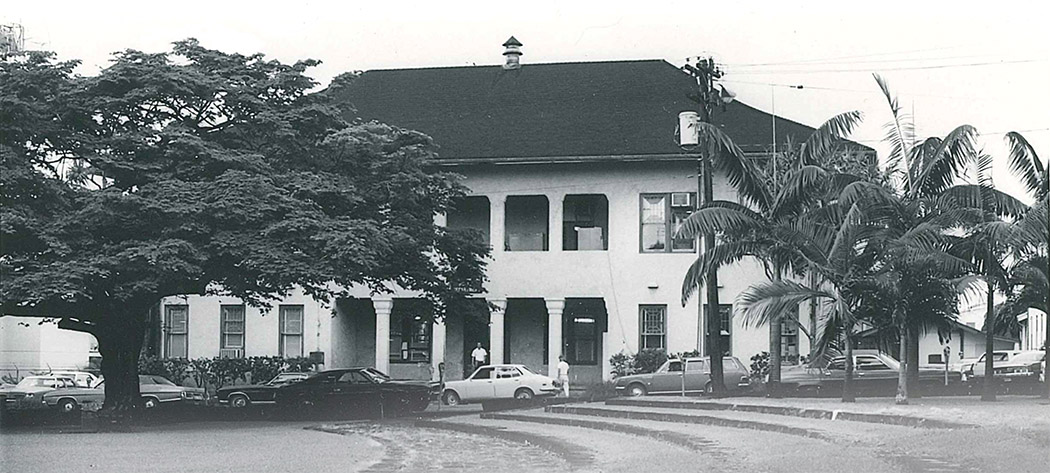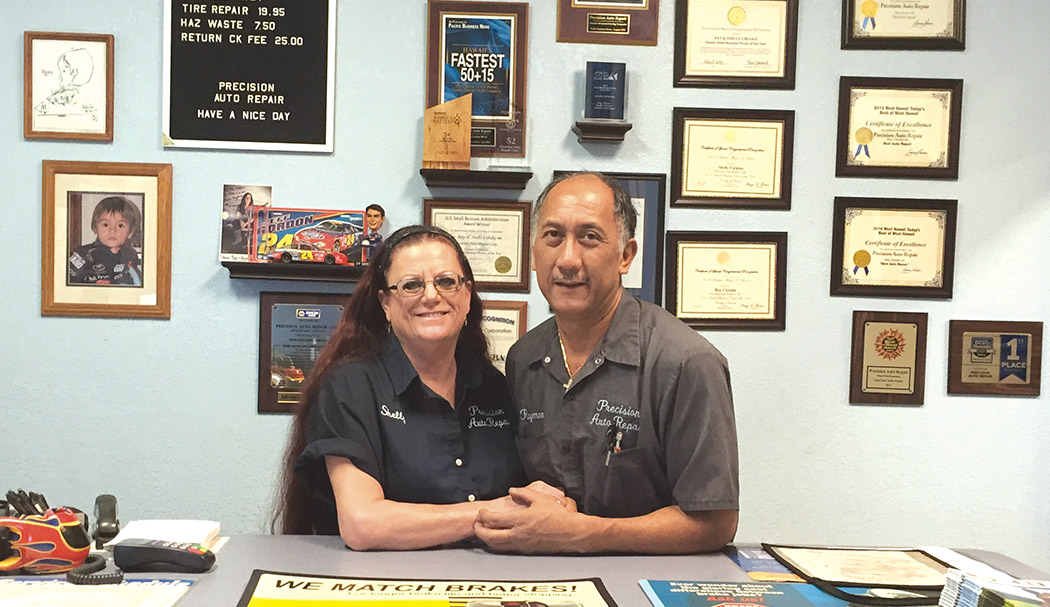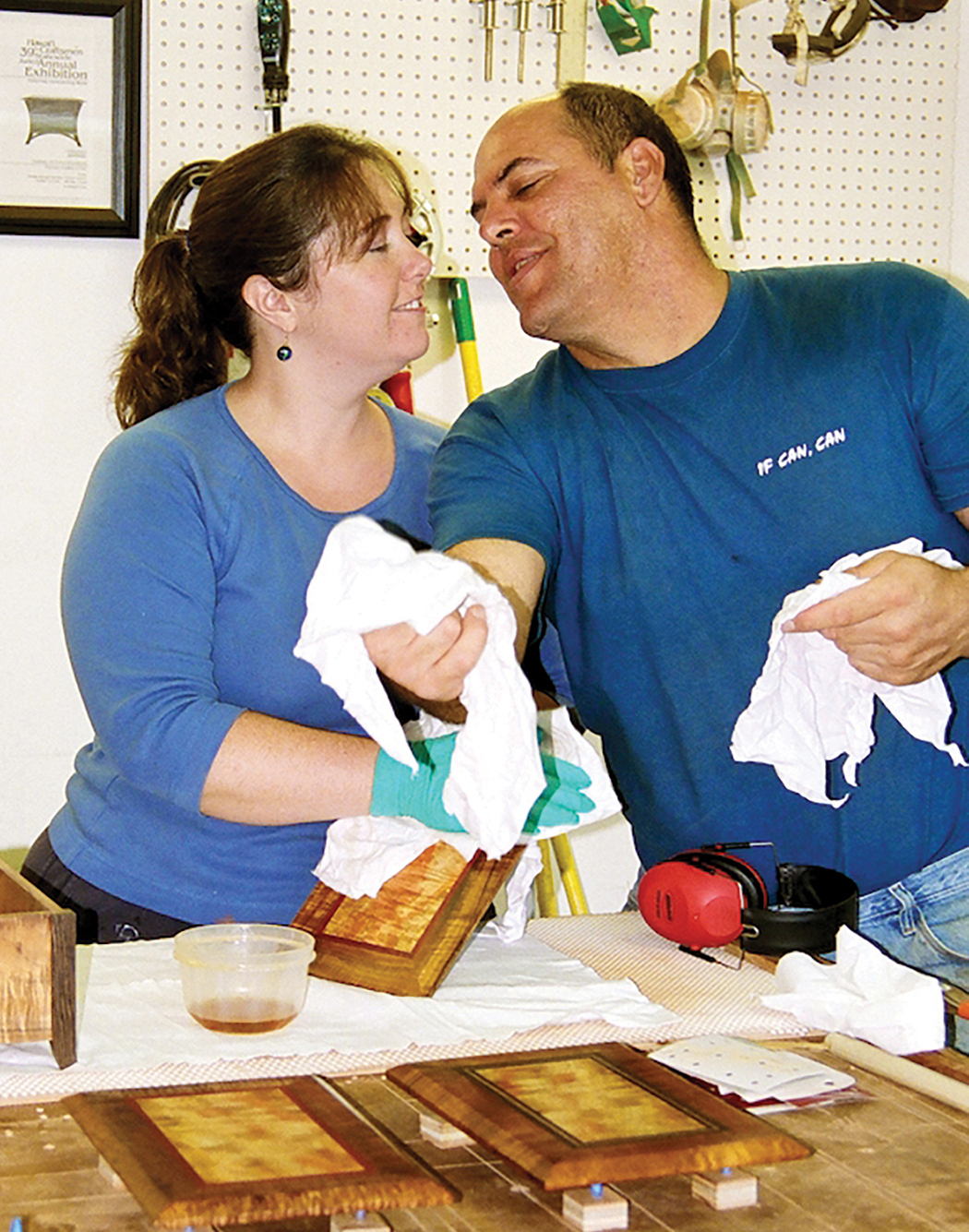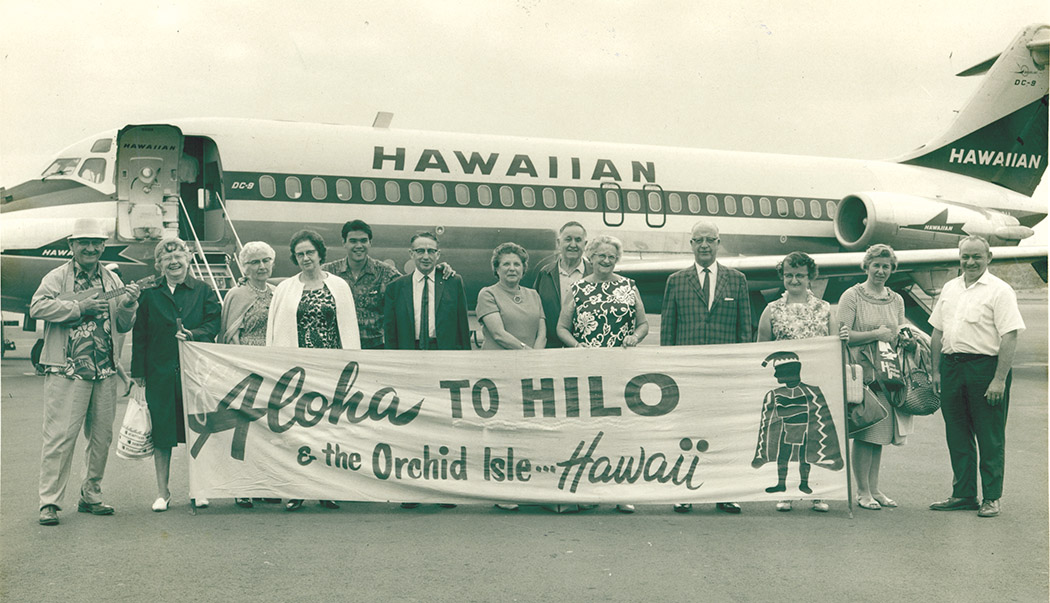
George Applegate: A Kupuna Looking Out for Hawai‘i Island

By Paula Thomas
He talks in arcs of thought as he shares stories about his upbringing, his youth, education, and coming of age. George Applegate, born in Honolulu in 1947 and raised in Hilo, has created a career out of his wits, his values, and his deep love of Hawai‘i Island.
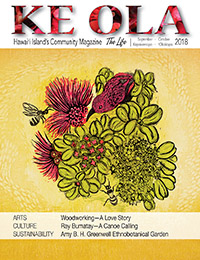
His father, Frank, was a 6’2” Texan from Ft. Worth, of the Applegate family that came to America from England in 1647. Frank was stationed at Pearl Harbor when he met George’s mother who was a Japanese journalist. George was born at Tripler Army Medical Center and when he was still a baby the family moved to Hawai‘i Island. Frank didn’t care for the Hawai‘i Island lifestyle and left his wife and children for the mainland in 1954 when George was seven years old.
George grew up fairly poor. As a young boy, he and his sister, Laverne, attended local schools and would visit their Japanese grandfather’s farm in Honoka‘a. He never liked school and was not a great student. “I never excelled at the ABCs and saw no connection between school and real life at home,” he admits. “I was teased and bullied, and I got into trouble a lot.”
By the time George was eight years old, his mother was a prominent journalist—“She was like Patsy Mink.” She owned the Sunrise Press, had remarried, but then suffered a debilitating stroke. From then on, he and Laverne took care of their mom and worked on their flower and sugarcane farm. George’s stepfather, a Japanese Isei (first generation Japanese immigrant to North America) and authoritarian personality, died when George was 16.
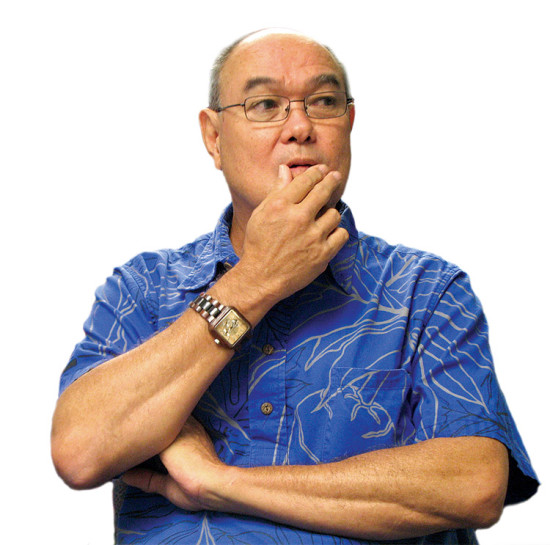
“I was a skinny guy in high school because of our economic situation. There wasn’t a lot to eat,” he reflects. “I was shy and insecure … After my stepfather died I took care of the family. The KTA family was good to me and hired me as a bag boy full time. I learned most of my work ethic from that job. I also took on weekend jobs—at the gas station, working cane fields, feeding pigs.”
Psychology was, and still is, one of George’s favorite subjects, and his high school teacher Stuart Postal taught him his first big lesson: what it means to have a personal perspective and to understand that one person’s truth may not hold for another. “That was a huge life lesson for me.”
George gives credit to his incredible, loving mom who shared dreams and visions such as that one day a man would walk on the moon. When George repeated this at school, he got nothing but taunts from his friends and concern from a teacher who thought the idea was preposterous. George learned early to stick to his guns and go his own way. Conforming never caught on with him. As George graduated from high school and turned 18, he also became a father to son, Paul.
College was not in the picture for him. He learned to use his mind to observe and found learning by experience much more accessible and instructive, as with a short-term sales job he had with Mauna Kea Memorial Park. There he learned his second big life lesson: work for something you believe in. Love what you do, be authentic, and people will buy from you. “So,” he says, “I would sit down and talk story with people. It was easy because I believed in the product I was selling. You must believe in what you’re doing. Otherwise you cannot be authentic. To sell, I had to listen to people and apply different tactics. I found what worked and went with it,” he explains.
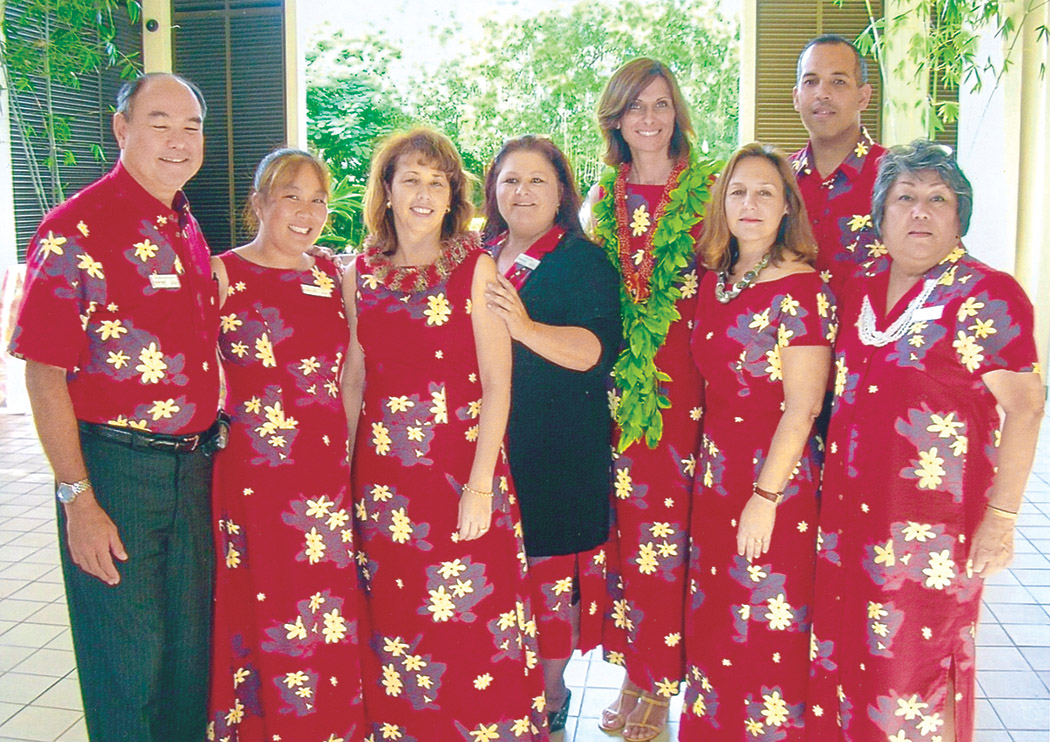
Big Island Visitors Bureau
Long before George was asked to head up the new office of tourism for Hawai‘i Island, his résumé read like a patchwork of odd jobs. In 1966, he became a bellboy at the first iteration of the Naniloa Hotel in Hilo. From there, he became a tour guide, boarding flights full of mainlanders coming to Hilo from Honolulu and taking them around, entertaining them with his ‘ukulele and sometimes singing to the crowd in the Crown Room.
From tour guide George became social director and joined the group in Hilo that was building up tourism. Ken Johnston headed up the first chapter of the then-called Hawai‘i Visitor’s Bureau, Hawai‘i Island office, and George volunteered. In 1989 he became its director of sales and marketing. When Ken moved on in 2000, it was natural for George to step into his shoes and Ken recommended to the board of directors that George succeed him.

For the next 14 years, George led the Big Island Visitors Bureau as executive director. He knows just about all the history of tourism on Hawai‘i Island because he was there when it was all developing: the first flights in, every hotel, Hawai‘i Volcanoes National Park (HVNP), Banyan Drive, bringing the room count from 300 to 2,300 hotel rooms in the mid 1960s, and the first direct charter flights from New York, Chicago, and Los Angeles into Hilo.
Coming full circle, George now works as the global welcome ambassador for the Grand Naniloa, a Doubletree by Hilton property. The hotel is doing well—from domestic and international visitors to island residents who are looking for an easy staycation.
Anything George is helping to establish will directly reflect Hawaiian culture, Hawaiian history, Hawaiian perspective, and a benefit to the people of Hilo. “It’s got to be Hawaiian as well as reflect the values of the many people that came to work our sugarcane fields.” he says. “Hilo is such a special place. Just sit here and look out … the fresh air, the calm ocean, and a quiet community. I want to keep it this way and make sure people have jobs.”
George traveled to Japan, Korea, and Europe to encourage people to visit Hawai‘i. He even met the Emperor of Japan, one of the preeminent moments in his long career of great moments. At an International Travel Bureau show in Berlin, he remembers thinking, “How are we going to get recognized?” With his marketing mind at work, George had all the trade booths serve Hawaiian coffee and macadamia nuts, and provided music and lei, to showcase Hawai‘i to the world.
Creating a Legacy

It’s in these kinds of interventions that you will find George’s genius. His associative thinking skills, his connections, and his love of Hawai‘i Island drive his efforts and make it easy for him to get up every day.
George knows the visitor industry inside and out, and has the knowledge when it comes to building and shaping up Banyan Drive from permitting, aesthetic, tourism, socio-economic, and cultural perspectives. Big shoulders are required along with an abundance of stamina and patience. He brings all of this to his work, holding a vision for what Hilo can become and working through the day-to-day issues, setbacks, and triumphs to see the vision through.
He is one of the reasons the Grand Naniloa has a hula theme: Kim Taylor Reese images throughout the lobby, Hula Hulas Restaurant, and hula lessons for the guests. Recent additions to their cultural repertoire include a true Hawaiian experience on an authentic double-hulled canoe, including lessons in mālama honua (taking care of the earth) and Hawaiian star navigation by a member of Polynesian Voyage Society.
George’s dream is to put Hilo on the map as a global destination without fundamentally changing its character as it is today. To do that, he is working with Hawai‘i County, the Department of Land and Natural Resources, the State of Hawai‘i, and Doubletree by Hilton to advance the development and transformation of Banyan Drive and support more tourism-related businesses. With so much changing on Hawai‘i Island, George is honing in on where the opportunities lie.
Talk to George, and in a long conversation about his life and what he does, he will invariably reiterate that he never went to college. Yet he holds to what a pastor once shared with him: “When it comes to talents, God doesn’t call the qualified to do a job, he qualifies the called to do the job.” George gives credit to the team of qualified, intelligent, and motivated people he associates with who make it happen for others. He also credits his wife, Angie, his children, grandchildren, and four great-grandchildren for keeping him straight and being a steady source of joy. “I believe that life’s basics are taught in the home.”

As he reflects on his life, he has come to believe “if you put your mind to something, it’s amazing what can happen. You know the two most important days in your life?” he asks. “The day you were born and the day you know why.”
As a kupuna, he has been a player for so long that people are now asking him to enter politics. When pressed about it, his response is muted: “We have a lot of good elected officials and department heads that do their best for the people of Hawai‘i. Instead of being an elected official, plugging in and assisting them and sharing direction is the right thing to do. I will always do what I can to support Hilo and Hawai‘i Island.”
Regarding the recent volcanic eruption, George says, “We will find a way to capitalize and create job opportunities for our community. As we continue to expand reasonably, HVNP will play prominently in the success of future growth for Hawai‘i Island. People want to see what has happened here. Tourism is the future for Hilo and Hawai‘i Island. It’s a great industry and can be a blessing for Hilo.”
“Every community has to have economic viability,” he says. “And real economic prosperity means our Hilo-based workforce can work in Hilo instead of commuting long distances—so everyone can spend more time with family. We all have freedom of choice to do or be anything we want,” he reminds. “It’s a wonderful gift we have in this country, so think and choose wisely.”
And that stance is pure George Applegate. ❖
For more information: george.applegate@hiltonhotels.com
